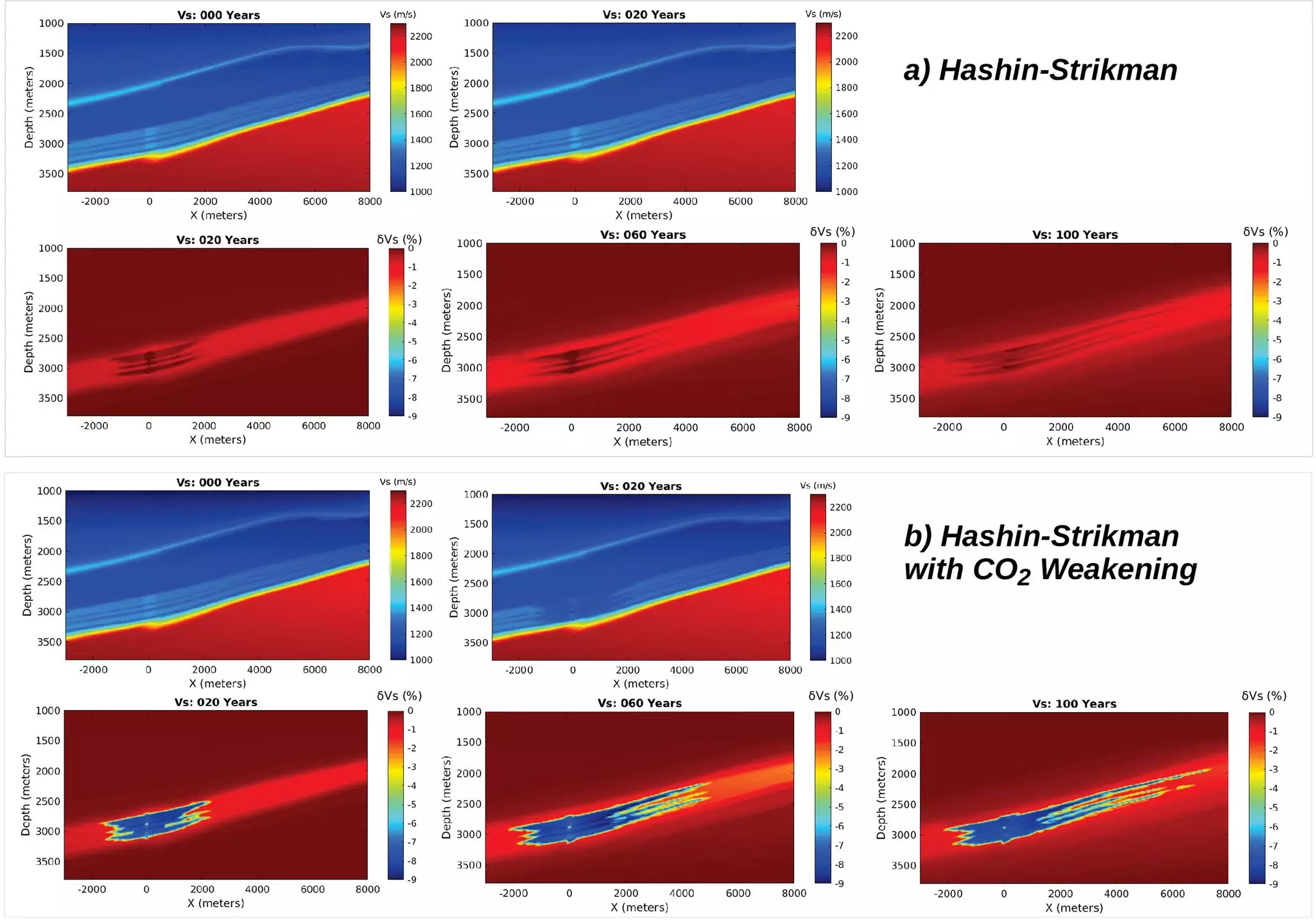The increase in atmospheric carbon dioxide (CO2) levels has raised urgent concerns regarding climate change and its devastating impacts. As efforts intensify to mitigate greenhouse gas emissions, geologic carbon storage has emerged as a vital strategy for sequestering CO2. However, the effectiveness of this storage approach is largely contingent upon our ability to monitor and understand how CO2 interacts with subterranean rock formations. For years, researchers have relied on established methods for seismic monitoring, but these approaches have revealed significant limitations. Recent advancements from the Los Alamos National Laboratory shine a hopeful light on this critical area of research, suggesting that a new rock physics model could transform how we monitor and quantify CO2 in geologic storage sites.
Current Limitations of Established Models
At the forefront of geologic carbon storage lies the Biot-Gassmann equation, a standard model used to assess rock elasticity when saturated with fluids, specifically CO2 in this case. Despite its widespread adoption, this model fails to adequately encompass various vital parameters such as nonlinear stress responses and chemical interactions that occur over time. These deficiencies mean that the Biot-Gassmann equation often delivers an incomplete representation of the physical changes occurring within the rock due to CO2 exposure. As Lianjie Huang and Neala Creasy from Los Alamos elucidate, the long-term infiltration of CO2 can significantly alter the mechanical properties of reservoir rocks, yet these changes are often disregarded in conventional modeling approaches.
The Breakthrough of the New Rock Physics Model
The new rock physics model developed by the Los Alamos team offers a breakthrough in this field. Unlike its predecessor, the model presents a more comprehensive understanding of the dynamic relationship between CO2 and reservoir rocks. By accounting for greater changes in elastic properties and focusing particularly on shear-wave velocity alterations, researchers are better positioned to predict and understand how CO2 will behave underground. This enhanced predictability not only improves the reliability of geologic carbon storage but also is integral for monitoring potential leaks effectively—critical factors that could mean the difference between a successful carbon sequestration strategy and one that could pose environmental risks.
The Role of Seismic Monitoring in Carbon Accounting
Monitoring geologic carbon storage has risen as a focal point for environmental scientists seeking to ensure the safety and efficiency of these systems. The innovative model introduced by Los Alamos helps elevate seismic monitoring from its current rudimentary state to one that can more accurately quantify CO2 reservoirs, enhancing the transparency and effectiveness of carbon accounting. With better data, scientists can detect leaks much more precisely and take necessary preventive measures, safeguarding both natural ecosystems and public health.
The ecological implications of improving CO2 monitoring models cannot be overstated. As climate imperatives mount, our technology and methodologies must evolve in tandem. The feasibility of an effective accreditation system for carbon capture and storage hinges on a high degree of reliability in monitoring techniques. The newly proposed model supplies a clearer theoretical framework that could ultimately revolutionize how we approach carbon emissions management through storage.
A Vision for the Future of Carbon Storage
The ramifications of this research extend far beyond immediate environmental impacts; they could resonate throughout the entire landscape of climate change mitigation strategies. By solidifying the foundations of geologic carbon storage through cutting-edge modeling, scientists are taking formidable steps toward addressing one of the most pressing challenges of our time. The urgency for action against climate change has never been more palpable, and the successful implementation of these advancements may well dictate the future success of global efforts to curb greenhouse gas emissions, potentially averting catastrophic climate scenarios.
As we venture deeper into this complex challenge, the spotlight must remain on innovative research that not only captures but also clarifies the dynamic interactions between CO2 and subterranean rocks. The Los Alamos team’s recent findings epitomize the intersection of science and practicality—a palpable realization that enhanced understanding and technology are vital to crafting a sustainable future. By embracing this new model, we are not merely advancing academic discourse; we are laying the groundwork for meaningful, impactful climate action.

